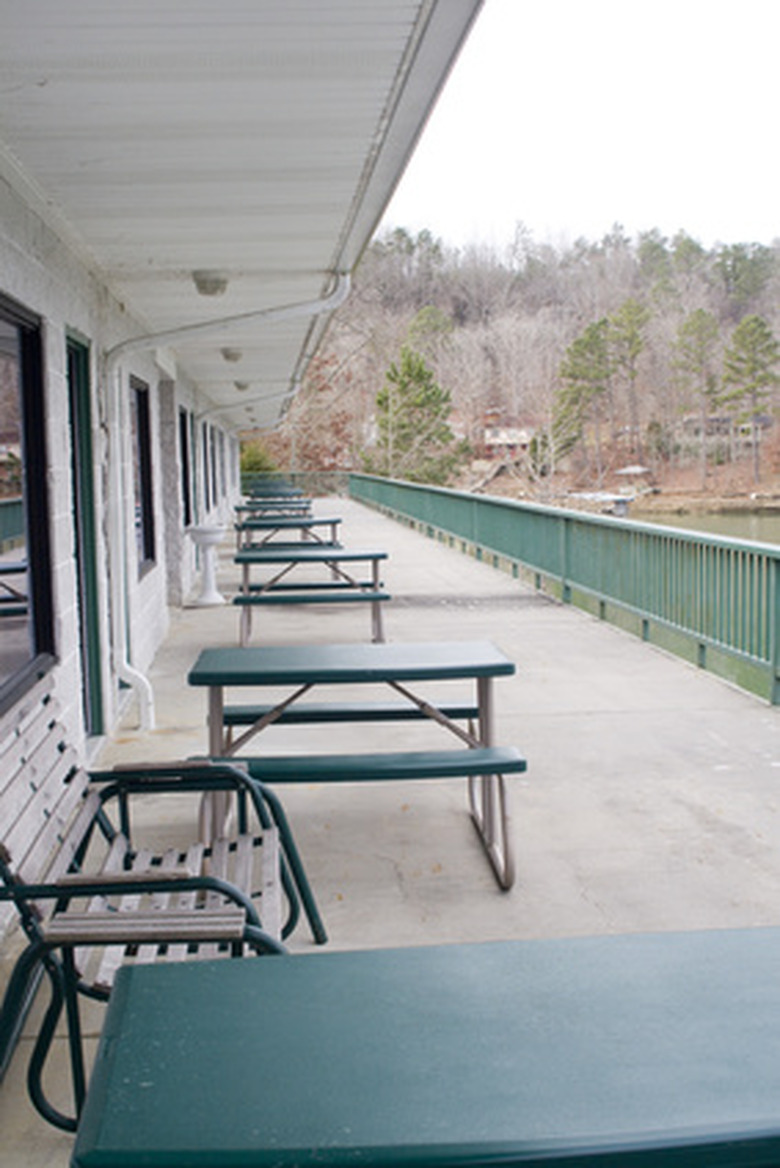How To Acid Wash A Concrete Patio
Things Needed
-
Bucket
-
Household detergent
-
Scrub brush
-
Stiff broom
-
Hose
-
Rubber boots
-
Rubber gloves
-
Eye protection
-
Sprayer or watering can
-
Concrete-etching acid
-
Baking soda
-
Dark rag
Tip
If the acid solution doesn't bubble, clean the concrete more thoroughly so the acid can penetrate.
Warning
Be cautious when working with acid. Wear long-sleeved clothing, eye or face protection and acid-proof rubber gloves and boots. When mixing the solution, add the acid to the water and not the other way around. If the patio is glassed-in or otherwise poorly ventilated, open it up as much as possible and use a fan if necessary to ventilate it while working. Avoid splashing the acid on surrounding items and keep pets and children away.
The rinse water may damage plants, so rinse in a direction away from ornamental plantings and toward gravel or grass that's easier to reseed.
A concrete patio may have a smooth, shiny surface that makes it slick when wet or that prevents paint or sealer from adhering. Acid washing etches the upper layer of cement, exposing more of the sand in the concrete mixture and making the surface feel rougher. Acid washing also removes stubborn stains. Home improvement stores sell several acids for concrete etching: citric, sulfamic, phosphoric or muriatic. Choose the safest that will get the job done. Citric acid may not be strong enough for a very slick patio, but the strongest acid, muriatic, requires careful attention to safety precautions.
Step 1
Sweep the patio to remove loose dirt. Choose a dry day without wind to work. Make a solution of 1 gallon of water and 1 tbsp. of detergent, and scrub the patio to remove other dirt and grease or oils. Rinse off the soapy water thoroughly with a hose.
Step 2
Put on old clothes, rubber boots, rubber gloves and eye protection. Fill a watering can or acid-safe sprayer with 1 gallon of water for every 60 to 75 square feet of the patio. Add the acid to the water, following the label directions for the strength of the solution. A typical strength might be 10 percent muriatic acid or 50 percent phosphoric acid.
Step 3
Spray or sprinkle the acid solution over the patio while the patio is still damp from rinsing. Scrub the solution into the surface with a stiff-bristled broom. Wait about 10 minutes or until the bubbling stops. Weaker acids may take longer.
Step 4
Mix a solution of 1 gallon of water and one box of baking soda in a bucket. Spread it over the floor with a broom to neutralize the acid, then rinse the patio thoroughly with clean water from a hose and let it dry.
Step 5
Rub a dark rag over the patio surface to check for any remaining light-colored powdery residue. If powder shows on the cloth, rinse the patio again until it's clean.
